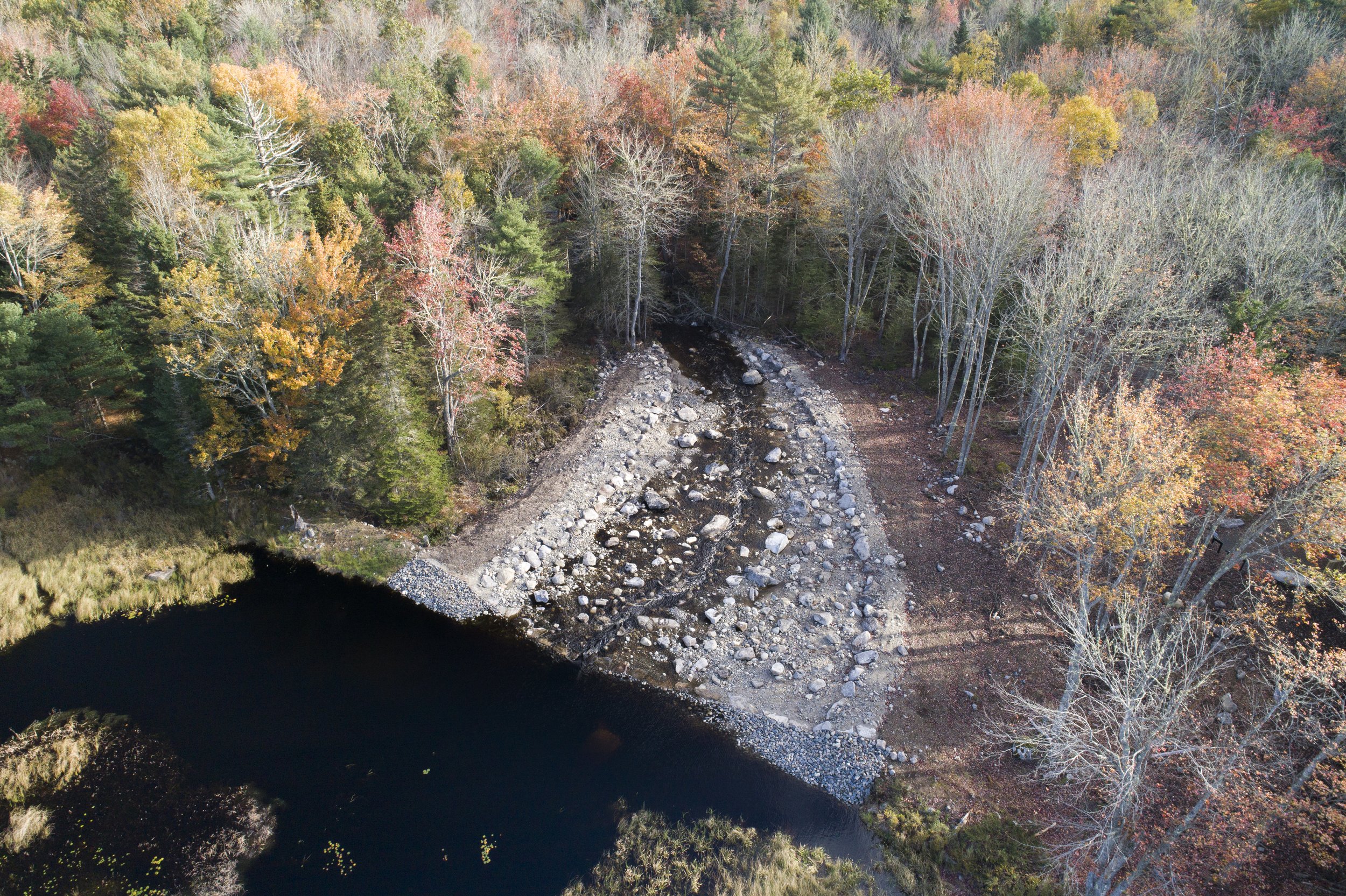
Restoration
Why is river restoration important?
River herring populations are near historic lows as a result of centuries of degradation since European colonization. While their populations once reached hundreds of millions across the east coast, dam construction, habitat loss and degradation, and overfishing all contributed to the decline of river herring. The Peskotomuhkati Nation at Skutic released a Strategic Sea-run Fish and River Restoration Plan for the Skutik (St. Croix) watershed in March 2022, which stated: “the river users and governments that have supported them spared no expense in degrading the traditional homeland of the Peskotomuhkati Nation. Passamaquoddy people would like to see no expense spared in the restoration of the Skutik watershed and ecosystem.” We have a collective duty to work toward a healthy ecosystem that supports a robust river herring populations, allows tribal nations to exercise their treaty reserved fishing rights, and supports human connections to and uses of this keystone species.
Given the multiple threats and diversity of habitats river herring use throughout their lives, restoration of river herring populations requires an ecosystem approach. Improving stream connectivity by removing dams, installing fishways or fish ladders, and repairing or replacing impassable culverts is critical to river herring restoration. Improving water quality and riparian habitat and ensuring adequate river flow are also important to the health of river herring populations. Since river herring spend most of their lives at sea, better understanding the impact of predation, climate change, and fisheries in the ocean environment are also important pieces of the restoration puzzle.
Given the range of restoration activities and need for an ecosystem approach, collaboration is fundamental.
Parker Pond fishway restoration, Brooksville, ME. September 2021.
Watch: “A Watershed Moment” Film
A Watershed Moment tells the story of an all-hands effort involving fishermen, three coastal Maine communities, non-profit organizations, and state and federal management agencies to restore fish passage throughout the entire Bagaduce River Watershed in Maine. These grassroots efforts to bring back alewife, a keystone species that has allowed fishing communities to thrive have been remarkably successful. An unlikely group of partners, the story of this partnership is rooted in collaboration and can act as a beacon of hope for other communities and watersheds involved in fish passage restoration and community-driven science and stewardship. A Watershed Moment is a story about people, fish, and the water that connects them.
How to get involved
The following organizations can share information about ongoing river restoration projects and how to get involved:
Maine Rivers - contact@mainerivers.org

